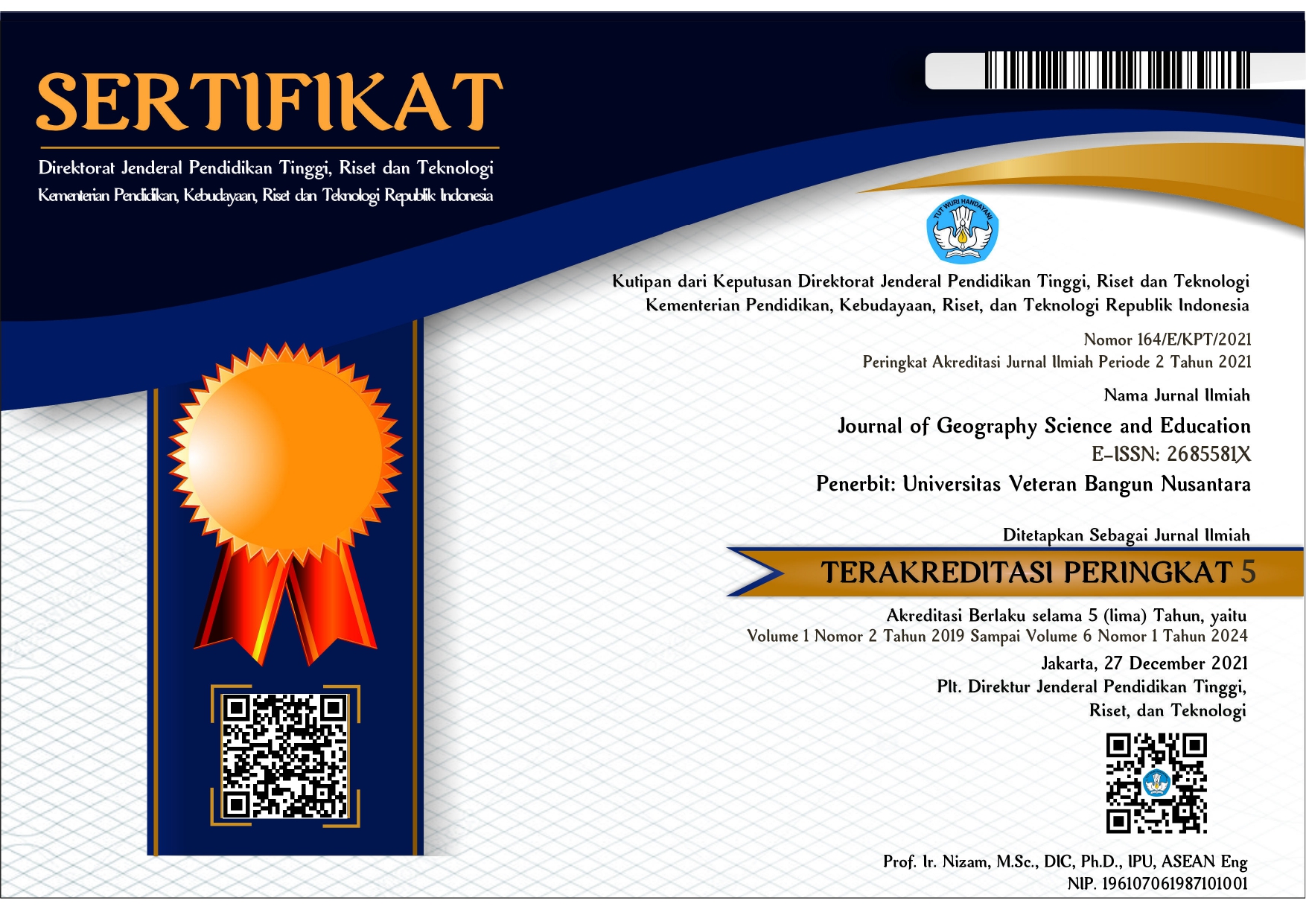THE USE OF VIDEO STREAMING LEARNING MEDIA IN GEOGRAPHIC LEARNING OUTCOMES BY NOTING LEARNING MOTIVATION
DOI:
https://doi.org/10.32585/jgse.v1i1.272Abstract
The purpose of this study is to find out how to use streaming-based audio visual video media on the learning outcomes of geography subjects on the subject of hydrosphere dynamics by paying attention to students' learning motivation. The type of research used is experiment. The study was conducted on April 16 2018 until May 16 2018. In this study data was collected through several techniques, namely by using documentation methods, test methods, and questionnaires. The results of this study concluded that there were no differences in geography learning outcomes that applied streaming-based video audio visual media and did not use audio visual media. There is no difference in learning motivation that applies audio visual video, and there is a relationship between the use of audio visual media and learning outcomes on student learning motivation.Downloads
References
Arief S.Sadiman, dkk., Media Pendidikan : Pengetian, Pengembangan , dan Pemanfaatannya, Jakarta:PT Raja Grafindo Persada, 2007.
Arifin Zainal. Penelitian Pendidikan: Metode dan Paradigma Baru. Bandung: PT Remaja Rosdakarya, 2011.
Arikunto,suharsimi,Prosedur Penelitian:Suatu Pendekatan Praktik, Jakartya : PT Rineka Cipta.
Sugiyono, Metode Penelitian Pendidikan: Pendekatan Kuantitatif , Kualitatif, dan R&D, (Bandung: Alfabeta,2013)
Sukmadinata.(2003).Landasan Psikologi Proses Pendidikan. Bandung: PT. Remaja Rosdakarya.
Zainal Arifin,Penelitian Pendidikan: Metode dan Paragdigma Baru, ( Bandung: PT Remaja Rosdakarya, 2011)
Downloads
Published
How to Cite
Issue
Section
License
Authors who publish with the Journal of Geography Science and Education agree to the following terms:
- Authors retain copyright and grant the journal the right of first publication with the work simultaneously licensed under a Creative Commons Attribution License (CC BY-SA 4.0) that allows others to share the work with an acknowledgment of the work's authorship and initial publication in this journal.
- Authors are able to enter into separate, additional contractual arrangements for the non-exclusive distribution of the journal's published version of the work (e.g., post it to an institutional repository or publish it in a book), with an acknowledgment of its initial publication in this journal.
- Authors are permitted and encouraged to post their work online (e.g., in institutional repositories or on their website) prior to and during the submission process, as it can lead to productive exchanges, as well as earlier and greater citation of published work.










